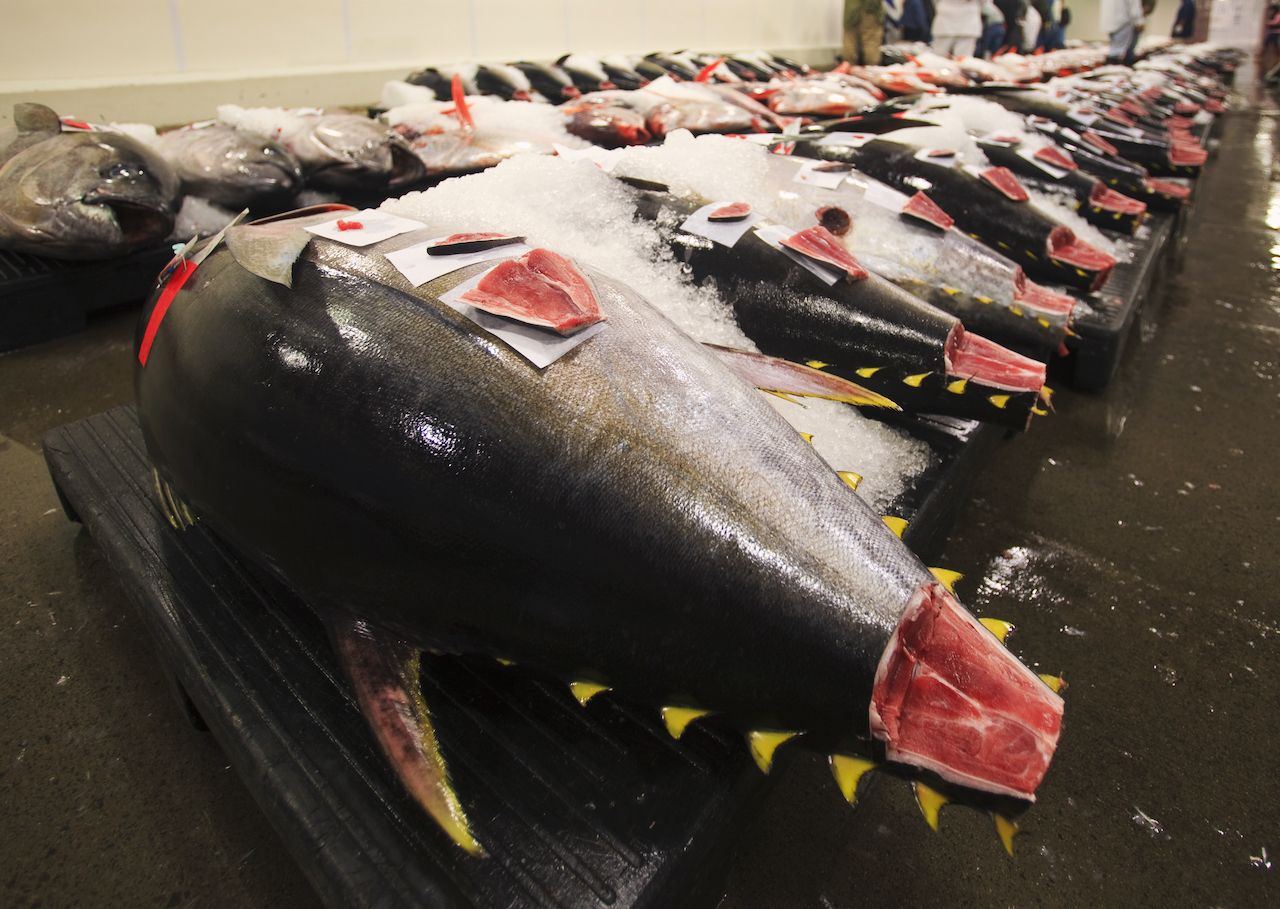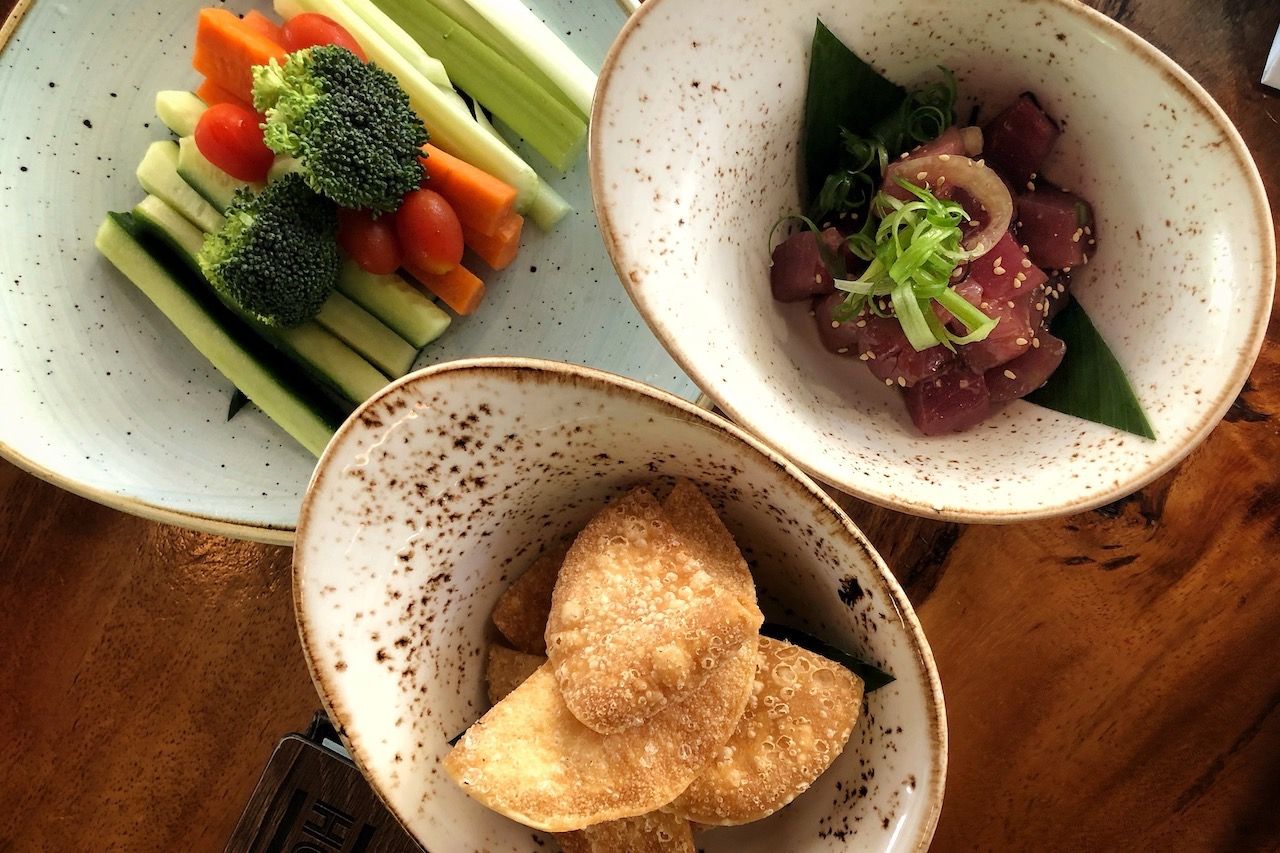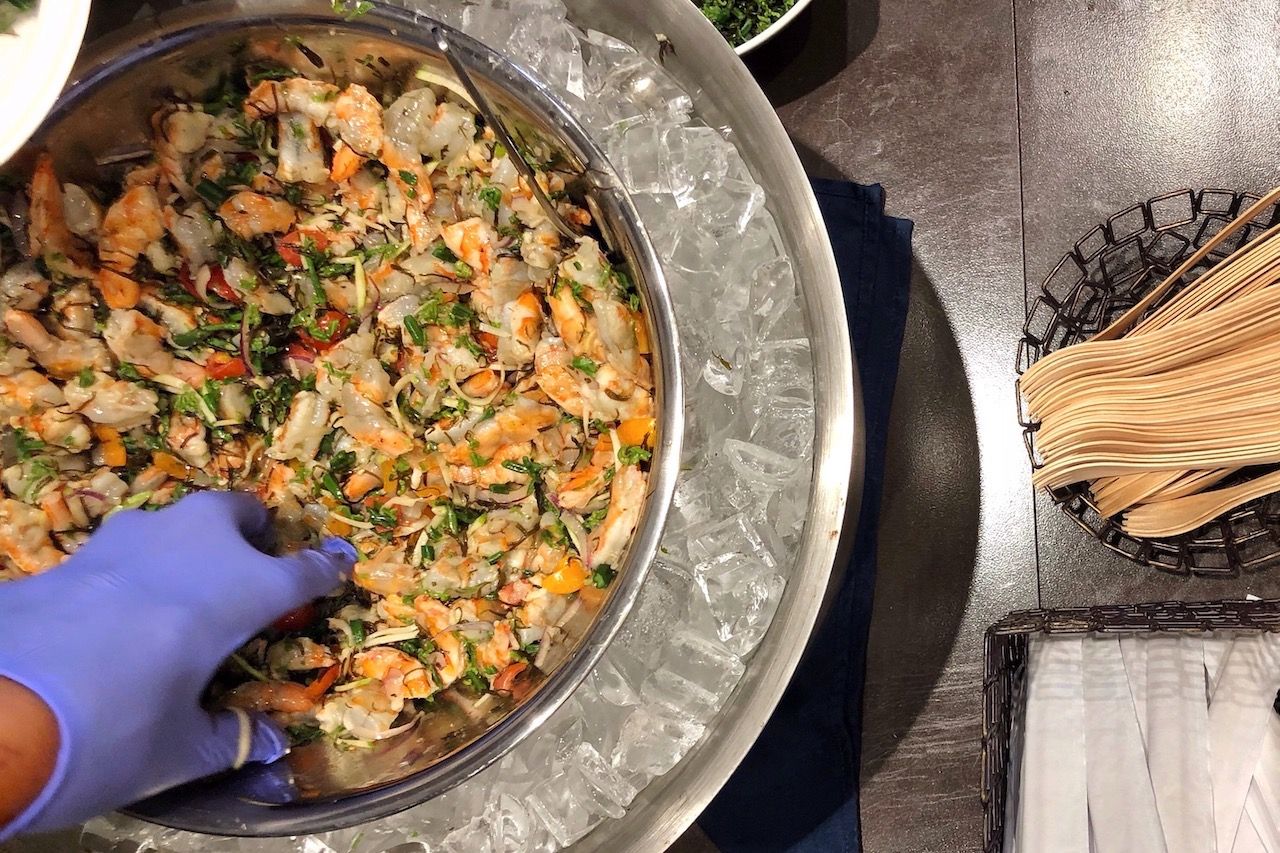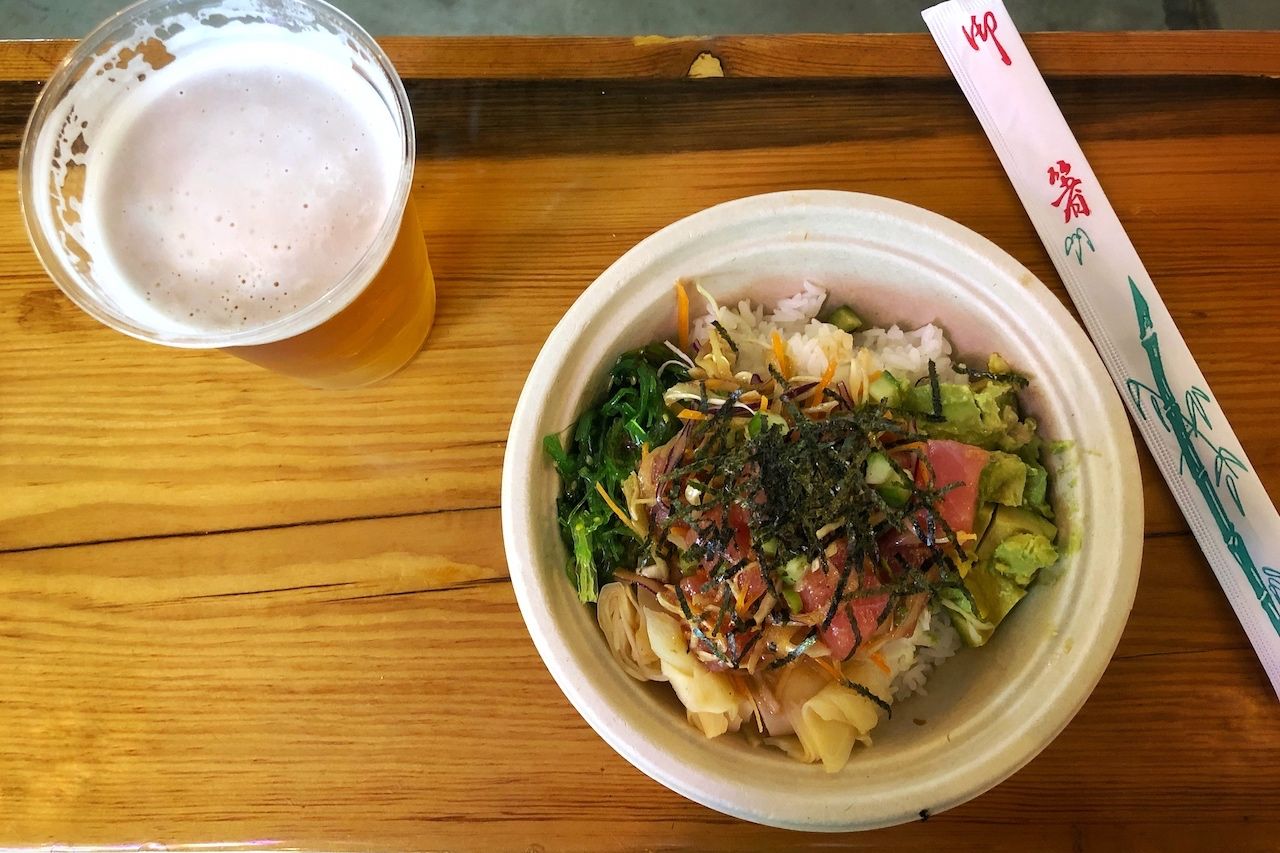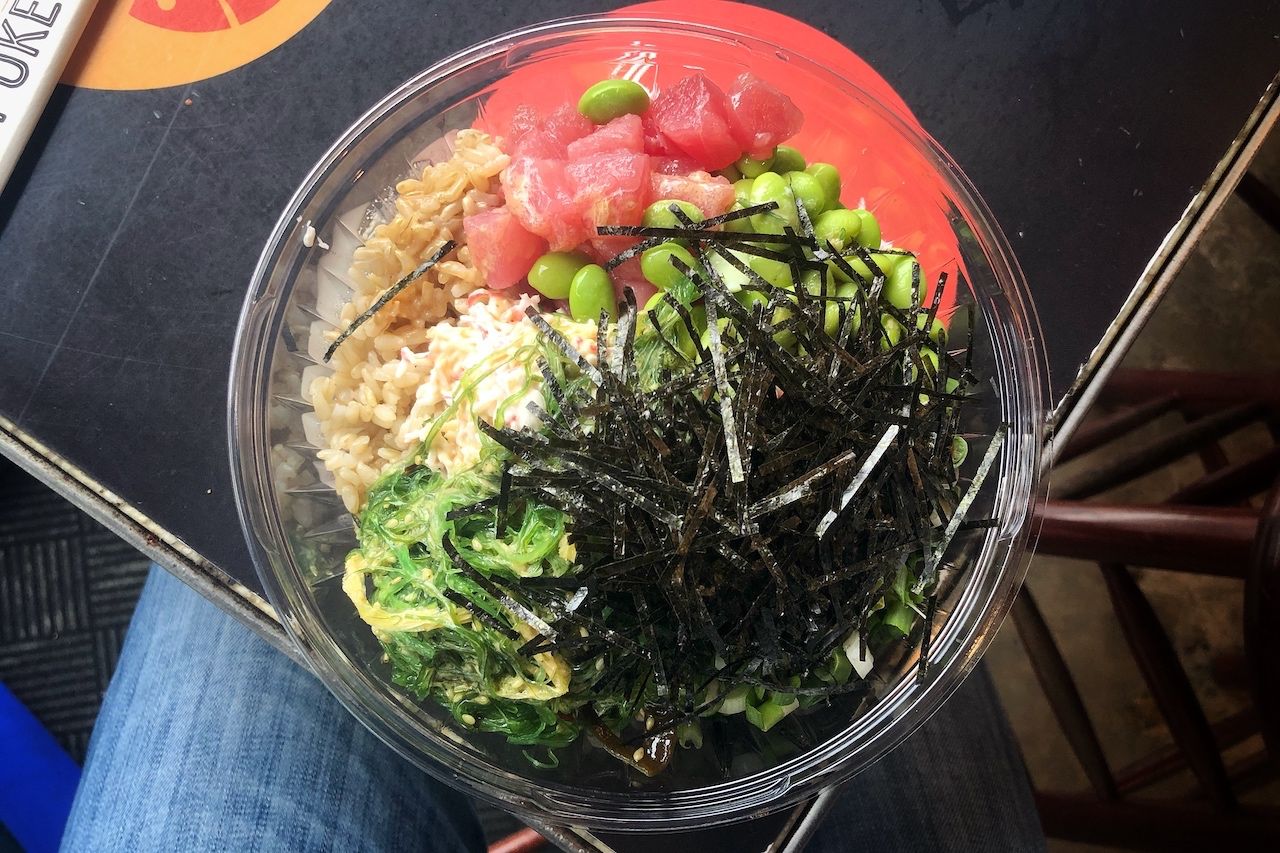I heard music playing in the main courtyard from my room at the Koloa Landing Resort at Poipu, Kauai, at around 9:30 in the morning. As I walked past pools and the Holoholo Grill to get there, I heard an emcee with a microphone before I saw him.
“We’ve got a lot of great things coming up for you all with the first-ever poke fest on Kauai,” the emcee said. “Why? Because Sam Choy said so!”

